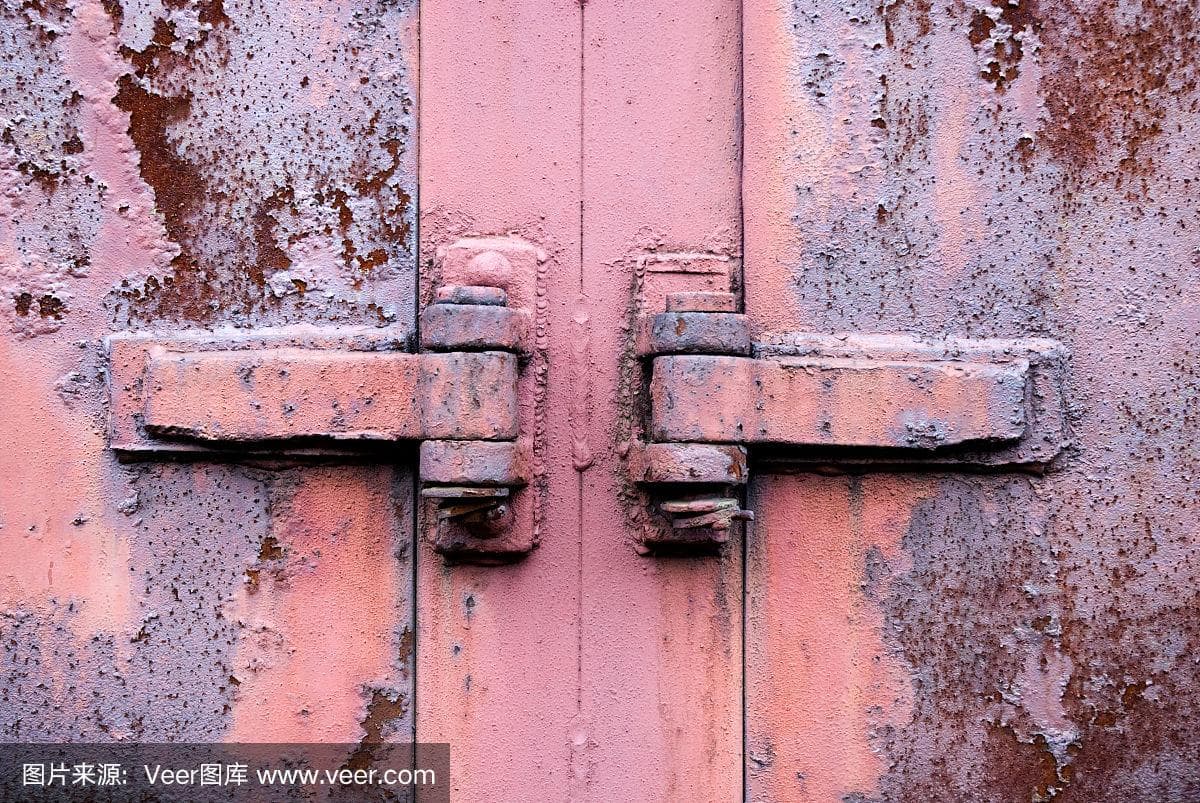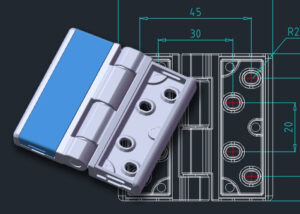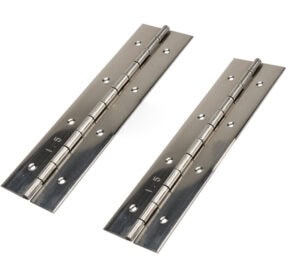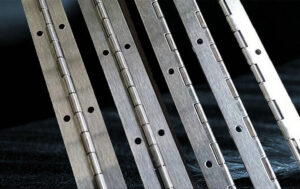Rust on door hinges not only looks bad but affects how they work, leading to squeaky hinges or ones that don’t move. If you leave rust on hinges, it will cause problems and make fixing them more difficult. But don’t worry because you can remove rust from hinges without taking them apart.
You can remove rust from outer door hinges without removing them by applying rust removers, using abrasive brushes, or lubricating with oils to break down rust.
Here’s how you can fix rusty hinges and not make them worse.

Why Do Hinges Rust?
Hinges rust primarily due to exposure to moisture, humidity, and oxygen, leading to oxidation. Outdoor hinges are particularly susceptible because of environmental conditions like rain, high humidity, and temperature fluctuations. Over time, this creates an ideal environment for corrosion. Factors such as saltwater exposure in coastal areas or harsh chemicals also accelerate the rusting process.
Once rust begins to form, it spreads quickly if not treated. Neglecting rusty hinges can cause them to seize or even break, significantly affecting the functionality of the door.
The Impact of Rusty Hinges on the Door
Rusty hinges can drastically impair the operation of a door. When rust accumulates, it adds friction, which can lead to squeaky noises or even prevent the door from opening and closing smoothly. In severe cases, rust can weaken the metal, causing the hinge to break or deform, making it impossible for the door to function properly.
In commercial or industrial settings, rusty hinges can lead to safety hazards. They can cause misalignment of doors, improper sealing, and even pose security risks if doors fail to shut completely or lock correctly. The damage can extend beyond the hinge itself, potentially requiring a costly full door replacement.
How to Deal with Rusty Hinges
How to Remove Rust from Hinges Without Dismantling Them?
Removing rust from door hinges without taking them off is possible using a few household items or commercial products. Here’s how:
- Apply a Rust Remover: Use a rust-dissolving product, such as a commercial rust remover or white vinegar. Apply it directly onto the rusty hinge using a cloth or brush. Let it sit for 20-30 minutes to loosen the rust. Then, scrub the hinge with a wire brush or steel wool to remove the rust particles.
- Use Abrasive Materials: For minor rust, scrubbing with fine-grade steel wool or a wire brush can eliminate surface rust without damaging the hinge or the door. Be sure to clean thoroughly afterward with a damp cloth to remove any remaining rust particles.
- Lubricate with Oil: Once rust is removed, apply a lubricant, such as WD-40, to the hinge. This helps to break down remaining rust and provides a protective coating to prevent future corrosion. Regular lubrication keeps hinges functioning smoothly and rust-free.
Remove the Hinges, Descale Them, and Put Them Back On
For more severe rusting, removing the hinges entirely for deep cleaning may be necessary. Here’s the process:
- Remove the Hinges: Unscrew the hinges from the door and frame carefully. Avoid damaging the door or stripping the screws.
- Descale the Hinges: Soak the hinges in white vinegar or a rust remover for several hours. This helps to break down heavy rust. After soaking, scrub them with a wire brush until all rust is removed.
- Reinstall the Hinges: Once clean, dry, and lubricated, reinstall the hinges. Ensure they are properly aligned and functioning smoothly before securing them back in place.
Replacement of Rusty Hinges
In cases where the rust damage is too extensive to repair, replacing the hinges may be the only option. Choose rust-resistant materials like stainless steel or brass for replacement, especially for outdoor or high-moisture environments. Ensure the new hinges match the size and type of the existing ones to avoid misalignment.
Different Ways to Deal with the Impact of Rusty Hinges on the Door
- Repainting or Refinishing: Rusty hinges often cause unsightly rust stains on doors, especially wooden or painted ones. If this occurs, sand down the affected areas, repaint, or refinish the door to restore its appearance after the rust is removed.
- Check for Door Alignment: Rusty hinges can cause doors to misalign, leading to uneven gaps or difficulty in closing. Once the hinges are cleaned or replaced, inspect the door’s alignment and adjust the screws to ensure a proper fit.
- Door Functionality Check: After treating or replacing rusty hinges, always test the door to ensure it opens and closes smoothly. Any stiffness or squeaking may require further lubrication or adjustment.
How Do I Maintain My Hinges to Avoid Them Rusting?
Preventing rust buildup on hinges requires regular maintenance. Here are a few tips to keep your hinges rust-free:
- Regular Cleaning: Wipe down the hinges periodically with a damp cloth to remove dirt, dust, and moisture that can contribute to rusting. This is especially important for outdoor hinges exposed to the elements.
- Lubrication: Apply a rust-resistant lubricant, such as WD-40 or silicone spray, at least twice a year. This creates a protective barrier and keeps the hinge operating smoothly.
- Use Rust-Proof Hinges: For exterior doors or in humid environments, choose hinges made from materials like stainless steel, brass, or coated with rust-resistant finishes. These are less likely to corrode over time, providing a long-lasting solution.
- Inspect Regularly: Routinely check hinges for signs of rust or wear, particularly after rainy seasons or exposure to corrosive elements like saltwater. Early detection helps address the issue before rust can spread.
By following these steps, you can effectively prevent and remove rust, ensuring that your door hinges remain functional and aesthetically pleasing for years to come.
Summary
To remove rust from door hinges without removing them, apply rust removers and use abrasive materials. Regular maintenance, cleaning, and lubrication can prevent rust from forming. Rust-resistant hinges offer a long-term solution for avoiding future corrosion.




